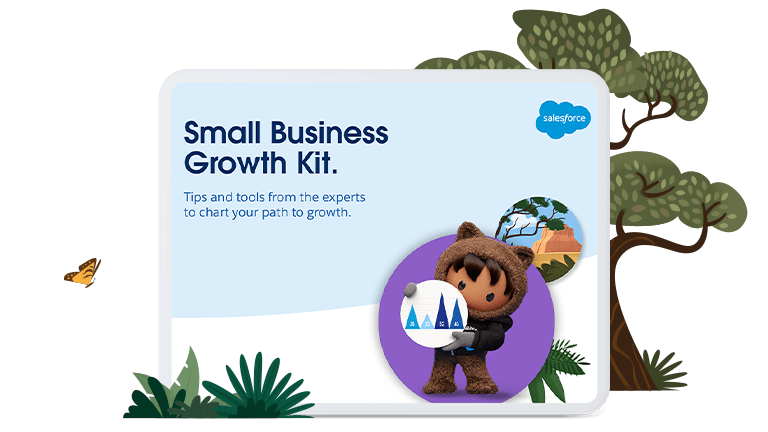Customer orientation strategies are helping SMEs rethink their objectives and centre their processes around the customer’s needs, rather than their own. Customer orientation has become vital in the digital age, when competition is fierce and customer expectations are higher than ever.
But the needs of the customer and the needs of the business don’t have to be at odds. In fact, the relationship between customers and companies is changing, as more and more businesses are choosing meaningful relationships over transactional ones.
What is customer orientation?
Customer orientation is a strategy that focuses on prioritising the needs of the customer: think serving, rather than selling. Businesses that focus on customer orientation let the customer experience (CX) guide their strategy, rather than the needs of the business. This means they’ll prioritise the customer experience, even when looking to stretch their resources further. For instance, instead of cutting customer service to reduce costs, which could lead to a poor CX, they might instead try to increase revenue by better leveraging their customer data.
What is customer data management?
Data management is a way to store and organise data so that it can be used to drive business intelligence. Good data management not only ensures that data is secure, but that it’s made ‘smart’, so that businesses can use it to gain insights, improve processes and drive customer loyalty.
Customer data management is a key concern for companies focused on customer orientation, as data plays an important role in mapping the customer journey. Without the right data, businesses will struggle to get a complete picture of their customer’s needs and pain points. That’s no small problem when 88% of customers say that the experience a company provides is as important as its products or services.
With this in mind, it’s no wonder that IT leaders now cite CX as being their top priority, and that sales people now track customer satisfaction more than any other metric.
The benefits of customer data management
It’s been said that data is the new oil. This is not just because of its value, but because of the way it fuels business processes. But in order to leverage data to drive a customer orientation strategy, you need to manage it well.
Here are some of the benefits of good customer data management:
Increased operational efficiency and improved productivity.
Quicker responses to changing market conditions.
A customer database with up-to-date information that can be used to launch new products, nurture loyalty and take customer service to the next level.
A secure storehouse for fuelling data analytics tools.
Improved cyber security, enabling businesses to build trust with their customers.
Better information to empower the workforce and increase employee engagement.
Data management is a key component of customer orientation, but it’s not the only one. Here are some other things to consider when forming a customer-orientation strategy.
Best practices for driving a customer-orientation strategy with data
Solicit feedback across touchpoints – and act on it. Different customer segments use different channels and have different concerns. Make sure you solicit customer feedback from your various touchpoints, and then use it to improve optimise your channels and provide a more personalised CX.
Monitor social media for common complaints. Nearly everyone now has access to the world’s largest megaphone, and it’s possible for one bad customer experience or mishandled complaint to make a business go viral in the worst possible way. Make sure to monitor your social media for recurring issues, use them to drive improvements, and address the customers in an empathetic and understanding way.
Make sure that teams have the right KPIs to track customer satisfaction. Too often we look at processes and KPIs (Key Performance Indicators) through the prism of the business. It’s also important to remember that what’s best for the business might not be the best for the customer, and evaluate these KPIs through a consumer’s lens. Not only will this help businesses focus on creating a great CX; it will help build a more customer-centric company culture.
Connect processes to give teams a 360-degree view of the customer. Breaking business siloes is a good way to connect functions, enable collaboration and provide teams with a holistic view of the customer. Having to repeat requests or provide information multiple times is a sure way to make customers irritable, so providing your teams with real-time information can go a long way to improving CX. Additionally, having all relevant information on a single screen will help agents improve FCR (First Contact Resolution).
Map the customer journey to remove friction and streamline CX. Try looking at your customer experience through the eyes of various personas. What channels are they using? How many actions is it taking them to get where they want to go? Are there any missed opportunities for cross-selling and upselling? Is it easy to locate customer support information? Are there various ways to contact support? Make sure every aspect of your CX is optimised across channels, and that the customer isn’t having to make a single click more than necessary.
Use data to provide personalised journeys at scale and tailor your SME’s loyalty programme. Customer data doesn’t just benefit a business, it benefits the customer as well. When used intelligently, data provides the backbone for creating tailored experiences that can predict what a customer wants, even before they want it. Even better, data can be used to create personalised loyalty programmes that reward loyal customers based on their individual behaviour, and with perks they actually want.
Introduce AI and offer self-service options to improve customer service. Not everyone wants to use chatbots, but for customers who want to get in and out of an interaction as quickly as possible, self-service options are a godsend. You can use AI-powered chatbots to help customers solve their own problems, or direct them to the appropriate channel, but make sure that they’re easy to use, preferably feature NLP (Natural Language Processing) and that they make things easier for the customer, not just your business.
Take customer orientation to the next level
Statistic after statistic show that businesses can’t afford to look at their customers as click-throughs rather than people. Tailored customer journeys and good customer service are no longer competitive differentiators; they’re standard operating procedure.
By catering to each unique buyer, providing service that goes beyond expectations and centring all processes around the customer, SMEs can focus on what matters most: building better relationships.
To learn more about how you can leverage technology to get closer to your customer, discover what CRM platforms can do for you. And to check out more ways to help drive growth in your business, download the Small Business Growth Kit.








